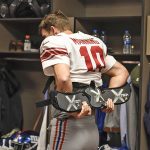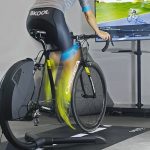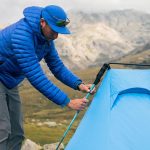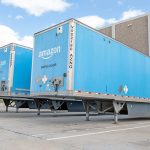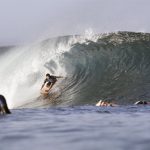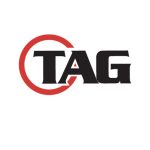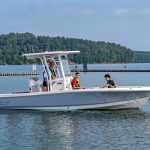After Armor Holdings acquired Gregory Mountain Products in January of 2005, the company was left trying to figure out how an outdoor pack brand fit into the broader strategy of a massive military contractors holding company. The brand ended up floating in a sort of limbo, with several strong VPs, but no one person given the authority to take Gregory to the next level. Less than a year after the acquisition, Paul Gagner, who was then Gregorys VP of sales, decided to leave Gregory and take a position where he could take the drivers seat, as president of Sierra Designs. This spurred a re-organization at Gregory that brought in a new president, a new director of sales and marketing, and new designers and product developers.
At the top, Gregory hired John Simons as its new president and Jim BoisDEnghien as its new North American sales and marketing director. BOSS was given the opportunity to sit down with BoisDEnghien and talk about the new team and the new direction he and Simons will be taking the company. While many of the faces at Gregory are now new, tha company still has several of its core team intact. Dion Goldsworthy, Gregorys VP of international sales and marketing, has been with the company for over ten years and Russell Rowell, director of product development, has been with the company for nine years as well. Most notably, Wayne Gregory is still actively involved as a key contributor to product development for the brand he founded over 30 years ago.
BoisDEnghien came to Gregory from his 10-year tenure as North American sales manager at Atlas Snowshoes, where used a team-based strategy that was highly integrated with marketing and product development, simultaneously creating products and helping build the markets for them. That approach helped Atlas more than double its size over the decade he was with the team. Prior to that, BoisDEnghien worked as brand manager and in product development and marketing at Canadian Recreation Products, a division of American Recreation Products, parent company to Kelty, Sierra Designs and other outdoor brands.
BoisDEnghien said that the brand is benefiting from the new talent brought on-board that is re-invigorating the existing team.
“I think that Johns approach and mine as well was to challenge the adage, this is how weve always done things,” said BoisDEnghien. “All of the changes and the new team actually re-invigorated Wayne hes like a kid in a candy store working on projects and working with the new team members. I am very excited to be working with him. For me personally, not having been in the backpack business, he is a key resource and a wealth of knowledge about the history of the brands.”
Simons came to the position as Gregorys president from a $10 billion food industry corporation called Swift and Company where he served as president and CEO for six years. While many have been chattering about Gregory being in the hands of an industry outsider, those who are working for Simons feel that he has brought a lot of talent, energy and enthusiasm to the company.
“I dont necessarily buy into the claim that you need to be a lifetime member of the outdoor industry to be in the outdoor industry. To some degree I think that that is short-sighted and we need to be able to pull in talented people from other markets,” said BoisDEnghien. “John Simons started less than a year ago and he came in from outside the industry, but with a lot of business experience at a multi-billion dollar company. So, his expertise is really in building teams. While John came in from outside the industry, he has surrounded himself with core industry veterans. Myself, Dion and Russell, we have all been in the industry for a long time. What John brings to the table is the leadership piece that Gregory has been missing for the past year.”
Simons and his team have spent the majority of their time addressing the weaknesses in Gregorys structure, primarily on the marketing side of the business. “You know there really was no strong market resource that I could tap into when I came on board. Gregory, as a company, has a lot of strengths but they have never been a strong marketing company,” said BoisDEnghien. “Thats an element that John brought to the table quickly by hiring Factory Design. You know we have a history of building great product, we have tremendous innovation, we have loyal customers and we are continually driving to better understand our customer and consumer. Factory Design is really helping us to define our brand and our position given all of these strengths.”
With the help of Factory Design, Gregory will be launching a new print and online marketing campaign supported by public relations and in-store POP as well as a re-vamped website. Gregory will also be working with 3point5 to develop a branding initiative within its retail sales training platform.
Looking ahead, BoisDEnghien sees several opportunities for the Gregory brand, primarily through product line extensions, organic domestic growth and international market expansion. “We want to grow beyond our niche as a big pack supplier. Weve been seeing some solid growth in the daypack category. Since the life of a daypack is much shorter than a technical pack, you are seeing new technology drive a lot of the growth. The category is almost becoming seasonal with the trade-in, trade-up factor becoming a major driving force in the market,” said BoisDEnghien. “I think there are still some opportunities for us to grow in the specialty channel in the U.S. but the international opportunity is definitely an area for growth for us in the future. The Canadian market is a great opportunity. Were going to develop a Canadian priced program, re-build the brand, and re-introduce it to the market.”
In addition, Gregory will be looking at the European, which remains “largely un-tapped,” and Asian markets. The brand has a strong position in Japan and it will be looking at entering the Chinese market and the Korean Market.
>>> While Armor Holdings is keeping their growth targets and strategies close to the vest, it would not be surprising to see this multi-billion dollar company acquire more outdoor consumer brands to balance their current reliance on Military sales

